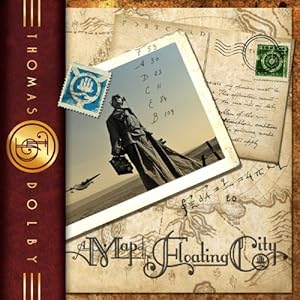 All told, it’s been a banner year for comebacks; in the past month alone, we’ve seen Morris Day & The Time roar back to life in a major way with Condensate, and Tom Waits has released his most vital album in years (decades, maybe) with the shockingly good Bad As Me. Perhaps something’s in the water; perhaps the old guard have been crouched in hiding, peeping the current state of Top 40, and deciding that it’s high time they show some of these youngsters up. Whatever the case, I’m declaring it here, folks: the idea of the comeback album as the last-ditch cash-grab from a washed-up artist looking to recapture former glories (but probably mostly former paychecks) shall, now and forever, die.
All told, it’s been a banner year for comebacks; in the past month alone, we’ve seen Morris Day & The Time roar back to life in a major way with Condensate, and Tom Waits has released his most vital album in years (decades, maybe) with the shockingly good Bad As Me. Perhaps something’s in the water; perhaps the old guard have been crouched in hiding, peeping the current state of Top 40, and deciding that it’s high time they show some of these youngsters up. Whatever the case, I’m declaring it here, folks: the idea of the comeback album as the last-ditch cash-grab from a washed-up artist looking to recapture former glories (but probably mostly former paychecks) shall, now and forever, die.
My decree may not hold forever. Still, it’s pretty exciting to hear artists remain artistically viable as they age; Thomas Dolby, who’s been producing music and dabbling in various technological products for the last 20 years, is best known for his gloriously nerdy 1982 single “She Blinded Me With Science”, but has rarely received proper credit for his innovative merging of electronic music and memorable, catchy pop hooks. His first album since 1992, A Map of the Floating City, sounds a bit more organic than the Dolby of yore, but that doesn’t mean he’s lost his adventurous spirit. On the contrary: Dolby’s electronic flourishes add dimension, texture, and fun to his compositions, and, perhaps most importantly, the electronics service the songs, instead of the other way around.
Opener “There is Nothing New Under the Sun” surprises by not surprising. Four chords, a pre-chorus, a catchy hook, acerbic lyrics about originality in pop music – Dolby’s legendary electronica pioneering isn’t even in play for the record’s first track, but he’s still got tricks up his sleeve like the four-bar horn section that stampedes through the arrangement every few minutes. Not that Dolby’s resting on his laurels – in fact, his brand of pop music is expansive and all-encompassing: “Spice Train” marries mariachi horns and Bollywood strings to a gurgling club beat, roots-rock gets a funny little workout on “The Toad Lickers”, and “Love Is A Loaded Pistol” sounds like the sort of smoky, lounge-jazz torch song that Elvis Costello would’ve recorded in his Burt Bacharach years. It’s part of the fun of Floating City, really; Dolby has a real handle on what makes all of these genres and subgenres special, and his own skewed perspective and artistic vision helps the disparate influences gel into something as consistent as it is inventive.
And he does it all in his singular songwriting voice; not content to simply put out a fun, ping-ponging pop pastiche record, Dolby crafts individual realities for each song, populating his little worlds with characters and details that’d make Dickens jealous. “Road to Reno” might be the best song here; it registers as a “Life in the Fast Lane”-esque tale of forbidden lovers on the run, but despite it’s bouncy pace and funny asides (“they ate Mars Bars for love; they crashed the car for love”) and infectious horn section and saloon piano, it ends in tragedy.” Epic family history “17 Hills” boasts the surging, delicate beauty of Springsteen’s best work, and manages to justify its unwieldy length with sheer storytelling and melodic goods; and then, there’s the fascinating “Oceanea”, a song who’s length and languid, go-nowhere pace seem to work against it, until that distant, transfixing melody takes hold. And Dolby’s voice – which has evolved nicely into a stately and pleasant tenor – pins everything down, and adds a pinch of class to the proceedings.
It’s all quite fascinating stuff – you’re never quite sure what musical path Dolby is going to wander down next, and the effect is almost always exciting. It’s pop art of the highest caliber, and it all services Dolby’s singular musical vision nicely. Chalk Thomas Dolby up as the latest unlikely candidate for a comeback – A Map of the Floating City is rarely anything but a delight.
Grade: A-

